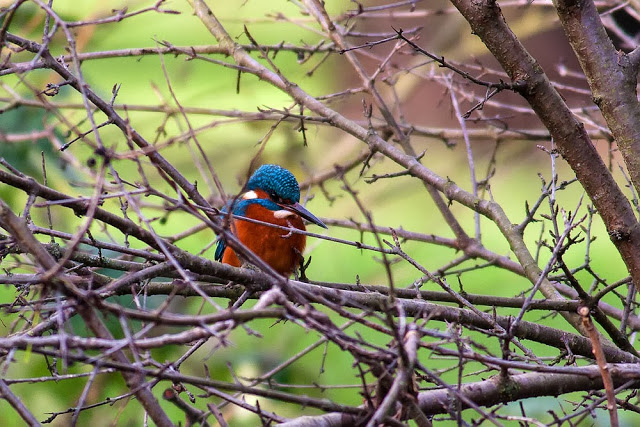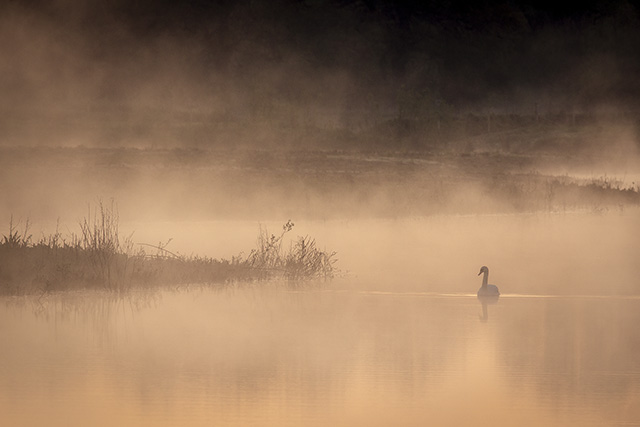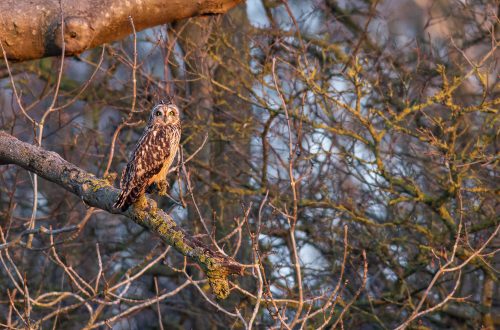Glad to be Alive

Some days you’re just glad to be alive.
The sun was beating down in the way it only seems to do in Spring; Creating a beautiful, bright, light but without the haze of summer, a warm glow spreading across the land; The heat pleasant, rather than hot making walking a pleasure; A slight breeze gently drifting across the open spaces, carrying with it the welcoming songs of summer migrants; The rising thermals lifting larger birds and raptors skywards with ease.
Yes, today was a day I was glad to be alive.
Glad to be Alive
I’d arranged to meet the site manager from the parks trust – Hi Martin – so he could inform me the future plans for the site, something I was really impressed with, as well as twist my arm to maybe get involved in some way, I look forward to making notes on nests and planting reeds in the future.
I’d arrived onsite early, having dropped the little lady at school, and began walking the fields running down to the main farm pits, the local lambs gamboled about the long grass while in the hedge surrounding Chiffchaffs and Willow Warblers announced their presence with their summer songs.
A lone female Sparrowhawk slowly began to climb high into the sky, effortlessly riding the spring thermals on spread wings, I watched her lazy climb until the mobbing of local Crows and Jackdaws forced her to move on. As I approached the edge of the large field a Grey Heron flew powerfully over.
 |
| Grey Heron in flight |
First Hide
Heading down the sloping forked path, my only Swallow of the day flew through, its light chattering call competing with the more tuneful Goldfinch feeding in amongst the long grass beside the path. Arriving at the small Western hide I settled in briefly for a scan, and was amazed to see that the lone female Goosander is still swimming the lakes, a very late reminder of the winter past.
The parks trust have recently trimmed the thick bush that covered half the water right in front of this hide and its removal allowed a competing pair of Coot to take up residence. Locally nesting Canada Geese could be seen hidden in amongst the scrub of the surrounding islands and a solitary Little Egret slowly crept out from behind one of the smallest islets, carefully inspecting the water for a fish or two.
 |
| Coot wading the shallows at Manor Farm |
Moving On
As I approached the main hide a pair of Redshank flushed up from the small muddy area to the east (an issue that will be eliminated by the reed planting there and reed blinds). Entering the hide itself I settled in to watch as the regular Lapwing whirled and buzzed about the air in front of me, a Little Ringed Plover made its presence known with its tuneful calls as it gently “parachuted” onto the thin island to the West, before quickly flying off as another birder approached.
 |
| Little Ringed Plover |
 |
| Coot swimming |
Scanning through the weedy scrub that covers many of the islands and muddy areas, there was not too much to see at first, another LRP, more Lapwing, some aggressive Coot, a few Teal, Gadwall and Tufted duck but otherwise very little, so my attention turned to the skies.
Buzzards and Kites
High in the air a Common Buzzard slowly drifted below the wispy clouds, after a few minutes watching the large raptor began to drift off, and I went back to watching the ground, when all of a sudden the Redshanks started calling loudly and Lapwings took to the air, but this time not in pursuit of a mate, this time in pursuit of a threat! A stunning Red Kite came in to site as it effortlessly flew through the patch, scaring the heck out of the resident birds but not really bothered, before casually flying off over the camp site.
 |
| Red Kite flying through Manor Farm. |
Still sitting in the main hide I was joined by a couple of other birders, one whom I have not seen in a long time (Ted) who quickly found a stunning male Yellow Wagtail, that dropped in for a very short visit, and the other who I had arranged to meet (Martin), who set about telling us all about the plans for the site, and they do sound excellent.
After a while watching and chatting we all headed off for a visit to the, as yet, unopened Eastern hide.
 |
| Magpie flyby |
Off Piste
Martin took us off down the unopened paths; informing us along the way of the plans for fences, scrub, reed beds etc. Along the way we managed to find 2 Green Sandpiper. Had some wonderful views of Oystercatchers as they flew by. And got to watch a couple of yellow faced Redpolls as they fed greedily on willow pollen.
I was also fascinated to hear of all the bat species that occur in the area. My birthday gift of a bat detector will come in very handy soon. As well as spots for interesting butterflies and potential areas for Dragonflies.
The Eastern hide has a great view out over the largest lake, and will, hopefully, be a great spot to sit and watch the small islands that often have terns and waders visit in summer.
 |
| Canada Goose in Flight |
Eventually after both Ted and Martin had left I was sat back in the main hide (with yet another birder, seems the reserve is getting popular now!). Little new appeared but I was able to spend some time studying the stunning Lapwing in more detail. The different hues of green, purple and even blue of their iridescent plumage looking superb in the spring sunshine.
 |
| Stunningly coloured Lapwing |
Walk Home
Eventually my pangs of hunger started to alert me that the day was getting on and I needed some lunch. So I started to head off towards home. Along the way I paused by the aqueduct to enjoy a sight (well a sound) that I rarely get to enjoy. Sadly not the cuckoo heard earlier in the day; but a singing male Grey Wagtail, that had taken up residence along the iron moldings of the old bridge.
 |
| Grey Wagtail (heavy crop) |
Heading up through the old lock area I was amazed at the sudden influx of both summer migrants and butterflies. As I walked I found four species of butterfly; Small Tortoiseshell, Brimstone (the main two), Peacock and a single Comma. All enjoying the spring sunshine.
Around me the bushes were alive with birdsong as numerous Chiffchaff and Willow Warblers sang from high branches. While skulking Blackcaps warbled their croaky song from deep within the bushes.
 |
| Willow Warbler high in the trees |
Yup, today was a day I was glad to be alive.
Did you enjoy Glad to be Alive? Or find it useful? The please share with your friends, via the links below.






4 Comments
JC
Hi Ashley, I'm a fellow dragonfly enthusiast and fellow nature blogger, which is how I found you (your Dragonfly book review). Now I'm at your blog.
Unless I'm missing it, there's no date showing on your blog entries. That would be useful information, though I may be blind to it. My wife says that's not uncommon. 😉
AshleyBeolens
You are not blind 🙂 I removed the date part as it was something that just seemed out of place on the theme I use, made it look messy for some reason.
Bex
what a lovely post – what site did you visit?
AshleyBeolens
Hi Bex, thank you, all my posts are about Manor Farm in Milton Keynes (also known as the Flood Plain Forest Nature reserve) unless otherwise stated 🙂